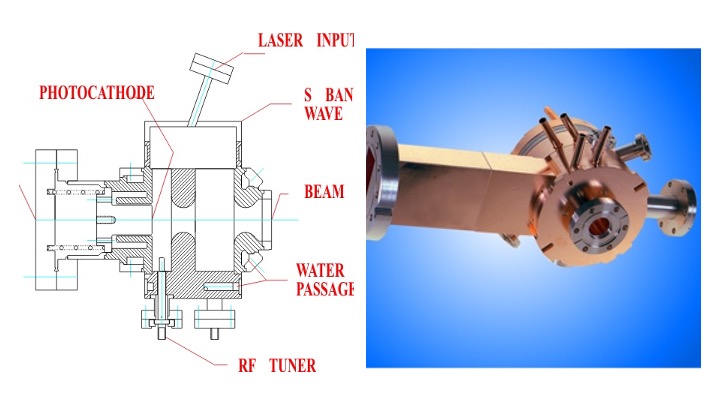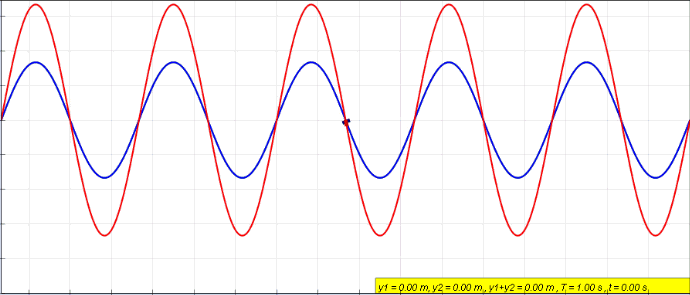|
Gyrotron
High-power 140 GHz gyrotron for plasma heating in the Wendelstein 7-X fusion experiment, Germany. A gyrotron is a class of high-power linear-beam vacuum tubes that generates millimeter-wave electromagnetic waves by the cyclotron resonance of electrons in a strong magnetic field. Output frequencies range from about 20 to 527 GHz, covering wavelengths from microwave to the edge of the terahertz gap. Typical output powers range from tens of kilowatts to 1–2 megawatts. Gyrotrons can be designed for pulsed or continuous operation. The gyrotron was invented by Soviet scientists at NIRFI, based in Nizhny Novgorod, Russia. Principle The gyrotron is a type of free-electron maser that generates high-frequency electromagnetic radiation by stimulated cyclotron resonance of electrons moving through a strong magnetic field. It can produce high power at millimeter wavelengths because, as a ''fast-wave'' device, its dimensions can be much larger than the wavelength of the radiation. Th ... [...More Info...] [...Related Items...] OR: [Wikipedia] [Google] [Baidu] |
Terahertz Gap
Terahertz radiation – also known as submillimeter radiation, terahertz waves, tremendously high frequency (THF), T-rays, T-waves, T-light, T-lux or THz – consists of electromagnetic waves within the International Telecommunication Union-designated band of frequencies from 0.1 to 10 terahertz (THz), (from 0.3 to 3 terahertz (THz) in older texts, which is now called " decimillimetric waves" ), although the upper boundary is somewhat arbitrary and has been considered by some sources to be 30 THz. One terahertz is 1012 Hz or 1,000 GHz. Wavelengths of radiation in the decimillimeter band correspondingly range 1 mm to 0.1 mm = 100 μm and those in the terahertz band 3 mm = 3000 μm to 30 μm. Because terahertz radiation begins at a wavelength of around 1 millimeter and proceeds into shorter wavelengths, it is sometimes known as the ''submillimeter band'', and its radiation as ''submillimeter waves'', es ... [...More Info...] [...Related Items...] OR: [Wikipedia] [Google] [Baidu] |
Microwave
Microwave is a form of electromagnetic radiation with wavelengths shorter than other radio waves but longer than infrared waves. Its wavelength ranges from about one meter to one millimeter, corresponding to frequency, frequencies between 300 MHz and 300 GHz, broadly construed. A more common definition in radio-frequency engineering is the range between 1 and 100 GHz (wavelengths between 30 cm and 3 mm), or between 1 and 3000 GHz (30 cm and 0.1 mm). In all cases, microwaves include the entire super high frequency, super high frequency (SHF) band (3 to 30 GHz, or 10 to 1 cm) at minimum. The boundaries between far infrared, terahertz radiation, microwaves, and ultra-high-frequency (UHF) are fairly arbitrary and differ between different fields of study. The prefix ' in ''microwave'' indicates that microwaves are small (having shorter wavelengths), compared to the radio waves used in prior radio technology. Frequencies in the micr ... [...More Info...] [...Related Items...] OR: [Wikipedia] [Google] [Baidu] |
W7-X Gyrotron
The Wendelstein 7-X (abbreviated W7-X) reactor is an experimental stellarator built in Greifswald, Germany, by the Max Planck Institute for Plasma Physics (IPP), and completed in October 2015.Introduction – the Wendelstein 7-X stellarator Retrieved 5 November 2014. Its purpose is to advance stellarator technology: though this experimental reactor will not produce electricity, it is used to evaluate the main components of a future fusion power plant; it was developed based on the predecessor Wendelstein 7-AS experimental reactor. , the Wendelstein 7-X reactor is the world's largest stellarator device. After two successful operation phases ending in October 2018, the reactor was taken offline for upgrades. The upgrade completed in 2022. New fusion experiments in February 2023 demo ... [...More Info...] [...Related Items...] OR: [Wikipedia] [Google] [Baidu] |
Electron Gun
file:Egun.jpg, Electron gun from a cathode-ray tube file:Vidicon Electron Gun.jpg, The electron gun from an RCA Vidicon video camera tube An electron gun (also called electron emitter) is an electrical component in some vacuum tubes that produces a narrow, collimation, collimated electron beam that has a precise kinetic energy. The largest use is in cathode-ray tubes (CRTs), used in older television sets, computer displays and oscilloscopes, before the advent of flat-panel displays. Electron guns are also used in field-emission display, field-emission displays (FEDs), which are essentially flat-panel displays made out of rows of extremely small cathode-ray tubes. They are also used in microwave linear beam vacuum tubes such as klystrons, inductive output tubes, travelling-wave tubes, and gyrotrons, as well as in scientific instruments such as electron microscopes and particle accelerators. Electron guns may be classified by the type of electric field generation (DC or RF), by e ... [...More Info...] [...Related Items...] OR: [Wikipedia] [Google] [Baidu] |
Klystron
A klystron is a specialized linear-beam vacuum tube, invented in 1937 by American electrical engineers Russell and Sigurd Varian,Pond, Norman H. "The Tube Guys". Russ Cochran, 2008 p.31-40 which is used as an amplifier for high radio frequencies, from ultra high frequency, UHF up into the microwave range. Low-power klystrons are used as oscillators in terrestrial microwave relay communications links, while high-power klystrons are used as output tubes in UHF television transmitters, satellite communication, radar transmitters, and to generate the drive power for modern particle accelerators. In a klystron, an electron beam interacts with radio waves as it passes through cavity resonator, resonant cavities, metal boxes along the length of a tube. The electron beam first passes through a cavity to which the input signal is applied. The energy of the electron beam amplifies the signal, and the amplified signal is taken from a cavity at the other end of the tube. The output signal ... [...More Info...] [...Related Items...] OR: [Wikipedia] [Google] [Baidu] |
Vacuum Tube
A vacuum tube, electron tube, thermionic valve (British usage), or tube (North America) is a device that controls electric current flow in a high vacuum between electrodes to which an electric voltage, potential difference has been applied. It takes the form of an evacuated tubular envelope of glass or sometimes metal containing electrodes connected to external connection pins. The type known as a thermionic tube or thermionic valve utilizes thermionic emission of electrons from a hot cathode for fundamental Electronics, electronic functions such as signal amplifier, amplification and current Rectifier, rectification. Non-thermionic types such as vacuum phototubes achieve electron emission through the photoelectric effect, and are used for such purposes as the detection of light and measurement of its intensity. In both types the electrons are accelerated from the cathode to the anode by the electric field in the tube. The first, and simplest, vacuum tube, the diode or Flem ... [...More Info...] [...Related Items...] OR: [Wikipedia] [Google] [Baidu] |
Transverse Mode
A transverse mode of electromagnetic radiation is a particular electromagnetic field pattern of the radiation in the plane perpendicular (i.e., transverse) to the radiation's propagation direction. Transverse modes occur in radio waves and microwaves confined to a waveguide, and also in light waves in an optical fiber and in a laser's optical resonator. Transverse modes occur because of boundary conditions imposed on the wave by the waveguide. For example, a radio wave in a hollow metal waveguide must have zero tangential electric field amplitude at the walls of the waveguide, so the transverse pattern of the electric field of waves is restricted to those that fit between the walls. For this reason, the modes supported by a waveguide are quantized. The allowed modes can be found by solving Maxwell's equations for the boundary conditions of a given waveguide. Types of modes Unguided electromagnetic waves in free space, or in a bulk isotropic dielectric, can be described as a ... [...More Info...] [...Related Items...] OR: [Wikipedia] [Google] [Baidu] |
Standing Waves
In physics, a standing wave, also known as a stationary wave, is a wave that oscillates in time but whose peak amplitude profile does not move in space. The peak amplitude of the wave oscillations at any point in space is constant with respect to time, and the oscillations at different points throughout the wave are in phase. The locations at which the absolute value of the amplitude is minimum are called nodes, and the locations where the absolute value of the amplitude is maximum are called antinodes. Standing waves were first described scientifically by Michael Faraday in 1831. Faraday observed standing waves on the surface of a liquid in a vibrating container. Franz Melde coined the term "standing wave" (German: ''stehende Welle'' or ''Stehwelle'') around 1860 and demonstrated the phenomenon in his classic experiment with vibrating strings. This phenomenon can occur because the medium is moving in the direction opposite to the movement of the wave, or it can arise in ... [...More Info...] [...Related Items...] OR: [Wikipedia] [Google] [Baidu] |
Helix
A helix (; ) is a shape like a cylindrical coil spring or the thread of a machine screw. It is a type of smooth space curve with tangent lines at a constant angle to a fixed axis. Helices are important in biology, as the DNA molecule is formed as two intertwined helices, and many proteins have helical substructures, known as alpha helices. The word ''helix'' comes from the Greek word , "twisted, curved". A "filled-in" helix – for example, a "spiral" (helical) ramp – is a surface called a '' helicoid''. Properties and types The pitch of a helix is the height of one complete helix turn, measured parallel to the axis of the helix. A double helix consists of two (typically congruent) helices with the same axis, differing by a translation along the axis. A circular helix (i.e. one with constant radius) has constant band curvature and constant torsion. The slope of a circular helix is commonly defined as the ratio of the circumference of the circular cylinder that it ... [...More Info...] [...Related Items...] OR: [Wikipedia] [Google] [Baidu] |
Waveguide
A waveguide is a structure that guides waves by restricting the transmission of energy to one direction. Common types of waveguides include acoustic waveguides which direct sound, optical waveguides which direct light, and radio-frequency waveguides which direct electromagnetic waves other than light like radio waves. Without the physical constraint of a waveguide, waves would expand into three-dimensional space and their intensities would decrease according to the inverse square law. There are different types of waveguides for different types of waves. The original and most common meaning is a hollow conductive metal pipe used to carry high frequency radio waves, particularly microwaves. Dielectric waveguides are used at higher radio frequencies, and transparent dielectric waveguides and optical fibers serve as waveguides for light. In acoustics, air ducts and horns are used as waveguides for sound in musical instruments and loudspeakers, and specially-shaped metal rod ... [...More Info...] [...Related Items...] OR: [Wikipedia] [Google] [Baidu] |
Superconducting Magnet
A superconducting magnet is an electromagnet made from coils of superconducting wire. They must be cooled to cryogenic temperatures during operation. In its superconducting state the wire has no electrical resistance and therefore can conduct much larger electric currents than ordinary wire, creating intense magnetic fields. Superconducting magnets can produce stronger magnetic fields than all but the strongest non-superconducting electromagnets, and large superconducting magnets can be cheaper to operate because no energy is dissipated as heat in the windings. They are used in Magnetic resonance imaging, MRI instruments in hospitals, and in scientific equipment such as Nuclear magnetic resonance, NMR spectrometers, mass spectrometers, Fusion power, fusion reactors and particle accelerators. They are also used for levitation, guidance and propulsion in a SCMaglev, magnetic levitation (maglev) railway system being constructed in Japan. Construction Cooling During operation, the ... [...More Info...] [...Related Items...] OR: [Wikipedia] [Google] [Baidu] |







